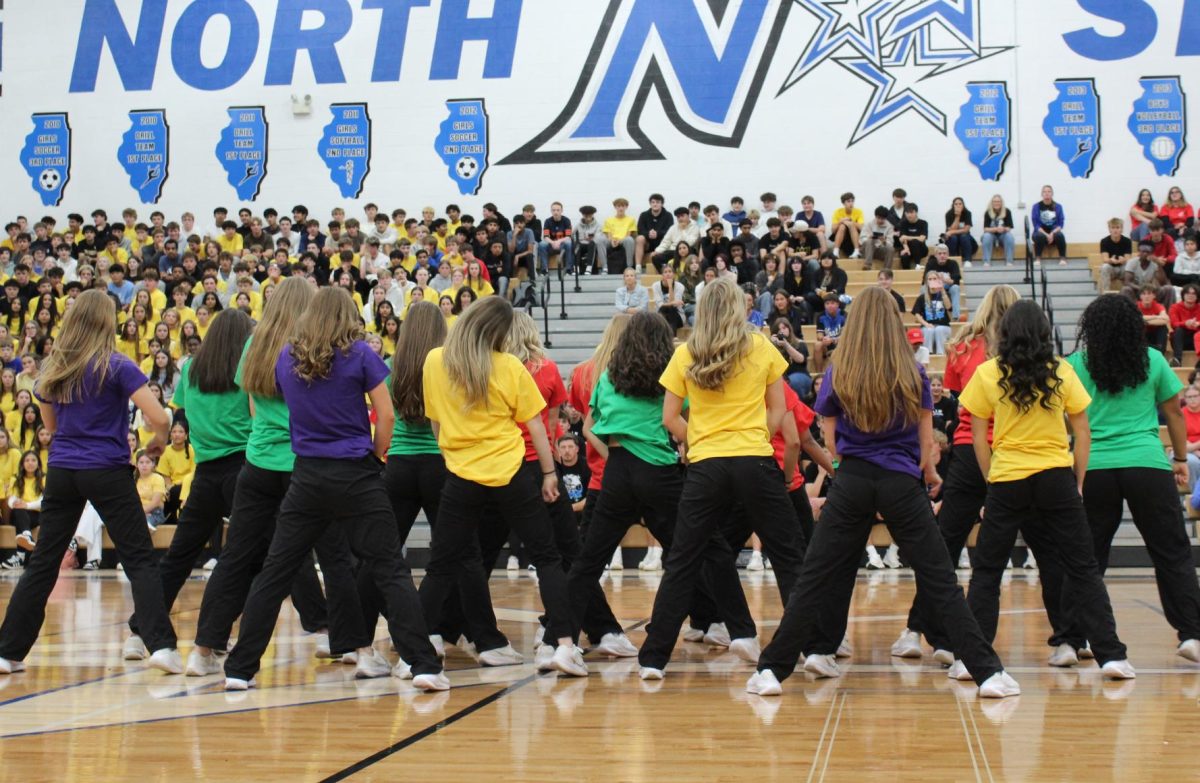Groups of formally-dressed attendees congregate throughout the nooks and crannies of the North gym, bright lights illuminating the walls with an array of vibrant colors as they flash. Everyone jumps up and down to the music’s beat together, and — for a blip in time — all students feel united.
Well, at least that is how many of us want to feel.
Homecoming week at North and many other American high schools alike consist of a similar premise: building school spirit through a week jam-packed full of fun. From window painting to a parade to a dance (all topped off with spirit days), North offers the full Homecoming experience. A major issue arises, though, when numerous students feel excluded from these activities altogether, even with the valiant organizational efforts of student council.
It seems impossible to escape Homecoming proposals for the several weeks leading up to the Homecoming dance. Poster boards with endearing messages written across the front may seem like cute gestures, and they definitely can be for those involved, but they often leave the people who never receive a proposal feeling lonely. Considering how around two thirds of teenagers ages 13 to 17 years old have never been in a romantic relationship, a massive chunk of North students find themselves in this trap of wanting — but never getting — asked to Homecoming by a date.
It is not just dates, either; students tend to form Homecoming groups that typically take pictures together and go out for food before the dance, but if someone does not join one in time, they face the choice of going completely alone or not going at all.
I went with two different groups my freshman and sophomore year, and I honestly had an absolute blast. We showed up to one of their houses all dressed up, and we laughed, talked and ate dinner prior to heading off. However, nobody invited me into their group my junior year, so I ended up going all by myself. I still managed to enjoy that evening overall, but I was seriously bummed out the entire time. Homecoming culture puts so much pressure on already having dates and friends instead of trying to foster new connections, leaving people feeling unworthy if they cannot scramble plans together beforehand.
Homecoming also encourages the overconsumption of clothing in order to fit in, especially among girls. Every school year, the student body expects girls to buy a whole new dress — even when the one that we used last Homecoming remains in good condition. Dresses can be expensive, and if we barely or never wear our Homecoming dresses again, they just contribute to America throwing out an annual 34 billion pounds of used textiles, 66% of which ending up in landfills.
Spirit days fester a similar problem, too; students buy a cheap accessory or piece of clothing that they wear once to fit the theme only to rid their closet of it later. This means that North students either do not participate in the fashion aspect of Homecoming (whether for financial or environmental reasons) and face scrutiny from their peers, or they do participate and waste clothes in the process.
I see the obvious benefits of Homecoming week: The wide variety of activities increase school spirit and provide us with a fun break from our usual classwork. Nevertheless, a notable chunk of North students face the reality of social ostracism, and the negative impacts last longer than just that week. By taking even just a few minutes to talk to new people or to give a compliment to a stranger, we at North can allow everyone to feel welcome. We need to start thinking about the students who — when the DJ plays “Dancing Queen” by ABBA and everyone sings along on the dance floor — are left to watch from the sidelines instead.










